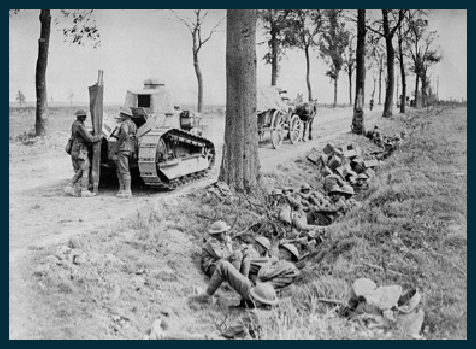Copyright © All rights reserved.



Edwin Dresser
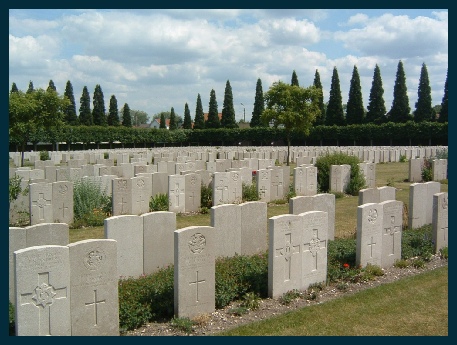
Edwin Eustace Dresser was born in the third quarter of 1886 and his birth registered in Pocklington. He was the youngest son of Thomas and Ellen (nee Whitwell) Dresser who married in the last quarter of 1874 in Lambeth.
Thomas was a Grocer and seedsman who had been born in Stamford Bridge and returned there shortly after his marriage. By 1891, Thomas and Ellen had seven children who were all, with the exception of the four-
1891 Census – resident at East Stamford Bridge
DRESSER, Thomas, Head, Married, M, 54, Grocer & Seedsman, Stamford Bridge Yorkshire,
DRESSER, Ellen, Wife, Married, F, 48, , Gate Helmsley Yorkshire,
DRESSER, Geraldine Willeford, Daughter, Single, F, 15, Scholar, Stamford Bridge Yorkshire,
DRESSER, Maude Millicent, Daughter, , F, 14, Scholar, Stamford Bridge Yorkshire,
DRESSER, Thomas Whitwell, Son, , M, 12, Scholar, Stamford Bridge Yorkshire,
DRESSER, Richard Oswald, Son, , M, 10, Scholar, Stamford Bridge Yorkshire,
DRESSER, Florence Ellen, Daughter, , F, 9, Scholar, Stamford Bridge Yorkshire,
DRESSER, Jessie Irene, Daughter, , F, 7, Scholar, Stamford Bridge Yorkshire,
DRESSER, Edwin Eustace, Son, , M, 4, , Stamford Bridge Yorkshire,
ELLIOTT, Mary, Servant, Single, F, 24, General Servant Domestic, Flaxton on the Moor Yorkshire,
Ten years later they were still there, though the eldest daughter had left home and Edwin was at school while his elder brothers were working.
1901 Census – resident at East Stamford Bridge
DRESSER, Thomas, Head, Married, M, 64, Grocer & Seedsman, Stamford Bridge Yorkshire,
DRESSER, Ellen, Wife, Married, F, 58, , Gate Helmsley Yorkshire,
DRESSER, Maud M, Daughter, Single, F, 24, , Stamford Bridge Yorkshire,
DRESSER, Thomas Whitwell, Son, Single, M, 22, Chartered Accountant, Stamford Bridge Yorkshire,
DRESSER, Richard Oswald, Son, Single, M, 20, Grocers Assistant, Stamford Bridge Yorkshire,
DRESSER, Florence Ellen, Daughter, , F, 19, , Stamford Bridge Yorkshire,
DRESSER, Jessie Irene, Daughter, , F, 17, , Stamford Bridge Yorkshire,
DRESSER, Edwin Eustace, Son, , M, 14, School, Stamford Bridge Yorkshire,
By 1911 the eldest son was fully qualified as an accountant, the next was helping his father in his business and Edwin was working as a bank clerk for Barclay’s Bank in Scarborough.
1911 Census – resident at East Stamford Bridge
DRESSER, Thomas, Head, Married, M, 74, Grocer And Seedsman, Yorks Stamford Bridge,
DRESSER, Ellen, Wife, Married 36 years, F, 66, , Yorks Gate Helmsley,
DRESSER, Maude Millicent, Daughter, Single, F, 33, , Yorks Stamford Bridge,
DRESSER, Thomas Whitwell, Son, Single, M, 32, Incorporated Accountant, Yorks Stamford Bridge,
DRESSER, Richard Oswald, Son, Single, M, 30, Grocers Assistant, Yorks Stamford Bridge,
DRESSER, Florence Ellen, Daughter, Single, F, 29, , Yorks Stamford Bridge,
DRESSER, Jessie Irene, Daughter, Single, F, 26, , Yorks Stamford Bridge,
DRESSER, Eustace Edwin, Son, Single, M, 24, Bank Clerk, Yorks Stamford Bridge,
By the time he was called up, Edwin‘s work had moved to the Malton branch of Barclay’s Bank, and it was from here that he joined the Grenadier Guards, probably in January 1917
After training in England Edwin was sent out to Flanders; a draft of 133 men and NCOs arrived with the 2nd Battalion on 11th August 1917. Probably Edwin was among these men. They would have found themselves in the midst of the 3rd Battle of Ypres, also known as the battle of Passchendale, which followed the successful advance of the Guards Brigade at the Somme. With the French close to outright mutiny the Guards Division moved North. It took three months to advance four miles over a front of some 1500 yards. The battle was bogged down and men were seen fighting often up to their knees in water. By the standards of the war casualties were modest which were between twenty-
Throughout August the Battalion was in camp between Herzeele and Proven. Here they were alternation between road-
They moved to bivouacs near Bluet Farm on 28th August and on 30th came under heavy shellfire. The 3rd battalion sustained considerable casualties especially when their cookers exploded after a direct hit but the 2nd got away with one man slightly wounded.
At the beginning of September they continued to come under heavy bombardment and sustained a fair number of casualties, before moving to Rugby Camp: “An extremely unpleasant four days. During the stay here the Battalion was bombed, shelled and gassed with the utmost freedom.” They then moved on to a different camp where the rest of the month was spent in an uneventful round of fatigues and drill.
From the 7th to 10th of October the battalion took part in a successful night attack on the German front line on the other side of the Broenebeek River where they sustained casualties amounting to 33 dead and about 150 wounded or missing. Otherwise October passed in camp and billets in a largely uneventful manner. During this time they were visited and reviewed by the Duke of Connaught and by Field Marshal Sir Douglas Haig.
During the First World War, Commonwealth camps and hospitals were stationed on the southern outskirts of Rouen. Almost all of the hospitals at Rouen remained there for practically the whole of the war. They included eight general, five stationary, one British Red Cross and one labour hospital, and No. 2 Convalescent Depot. A number of the dead from these hospitals were buried in other cemeteries, but the great majority were taken to the city cemetery of St. Sever. In September 1916, it was found necessary to begin an extension, where the last burial took place in April 1920.
The news of Edwin’s death reached Malton about a fortnight later: “News has been received of the death, in France” on 15th Inst. Of Private E. E. Dresser, Grenadier Guards from pneumonia. Pte Dresser was on the staff of Barclays Bank Ltd., Malton before joining the Army and he is the third member of their staff whose death has been reported during the war”. His will leaving just over £500 to his brothers Thomas and Richard was proved on 30th December 1918.
Edwin is commemorated on the memorial in St Michael’s and on the town memorial as well as on a monument in the churchyard at St John the Baptist church, Stamford Bridge.
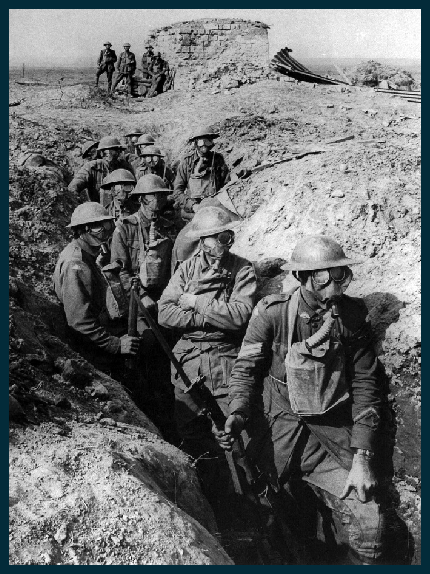
During November the Guards Brigade marched from the camps towards St Quentin to take positions there over from the French. Owing to a shortage of motorised transport much of their equipment was put into storage in St Pol. At this time a major re-
Though admirable in theory, the working is generally chaotic, a hurriedly improvised staff of Officers working under the Q side of the Guards Division, is hardly an ideal administrative machine, and the difficulties of Battalions is usually greatly increased by the Division insisting on sending to the reinforcement battalion all ranks coming off leave and courses. The result is Battalions never know who they can expect to be available for duty, either Officers, NCOs or men. This time however, the above obstacle was removed and men off leave returned direct to their unit.”
By the 20th November they had reached Comtecourt with “the Battalion in great heart, all singing and marching splendidly”. The following evening they received orders to move on: “The Battalion marched off in 20 minutes from receiving the orders and after a messy march mainly in single file past an interminable line of buses and other troops, embussed... and proceeded at a leisurely crawl to Barastre where we found an excellent hutted camp which we reached at about 1.30 a.m. though the distance to be travelled was about 15 miles.” The next day was “A day full of orders. Countermanded orders, new orders and lack of orders… At 7.20 p.m. orders were received for the head of the Brigade to march off at 7.30 p.m. No hint was given as to whom we were to relieve or where, all details who were intended to stay with 1st line were ordered to parade with their companies and the 1st Line transport followed the Battalion until a Staff Officer indulged in the whim of diverting it, unknown to the Battalion, to an undisclosed destination, with the gratifying result that we were left without Lewis Guns to take into the line. After a long walk the Brigade Major was encountered and divulged a thin clue as to where we were going… The relieved Battalion then lent us their Lewis Guns and at about 5.00 a.m. the relief was complete after a most instructive day and plenty of it, Reveille having been at 3.45 a.m. and the Battalion having been on the move continuously for 25 hours.”
On 26th November they marched to Ribecourt “in a snowstorm and found their only accommodation was the old German line which was not quite so comfortable as the front line they had just left. Both greatcoats and blankets being in store, the Battalion spent a most miserable night.”
Between 30th November and 2nd December the Battalion was in action in Gouzeaucourt Wood which they successfully took and held at the cost of 151 NCOs and men killed and wounded.
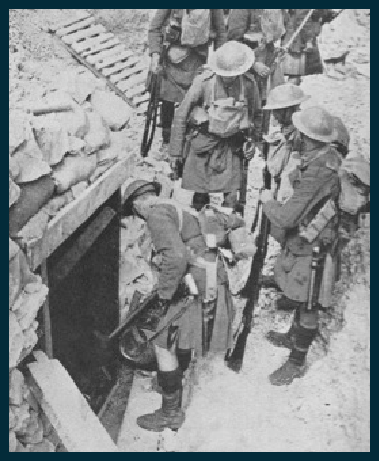
For the rest of December and the first week of January 1918 the Battalion was in billets occupied in training and drill but on 9th January they were again in the front line in deep snow. The initial impression was favourable: “The line is convenient in many ways – there is a light Railway and a Canal which enable troops and rations to be brought within about a mile of the line, and there are also cookhouses where hot meals for the troops may be cooked and from where they can be conveyed to the line in hot-
Throughout February and early March they continued alternating between the front line and support, with a short and much appreciated spell in the reserve. On 20th March they moved to the town of Arras, before moving into camp on 22nd. There followed a time of rumour and uncertainty as it became clear that the Germans were beginning a major offensive: “A quiet day, full of rumours:-
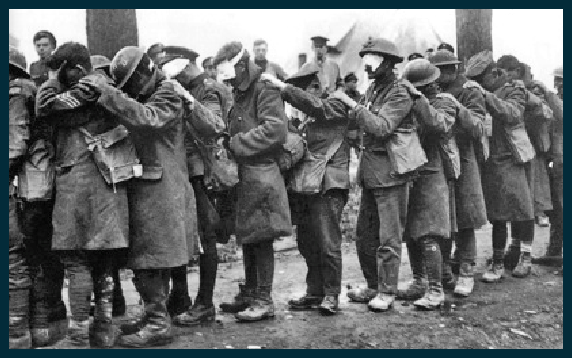
The Sixth Army took part in the Battle of Hazebrouck between 12-
May followed the same pattern. In early June bombardment became heavier and the number of casualties went up. The second week of June saw the Battalion relieved and they went into billets where a good deal of training took place. “A Platoon Competition was also organised, a Platoon from each company entering. The following were the events: Bomb Throwing, Rifle bombing, Competition for Massage Carrying by Platoon Runners, Stretcher Bearer Competition, Bayonet fighting, Lewis gunnery, Musketry, Tactical Schemes, Drill.” The Battalion also won the Guards Divisional Horse Show and on 30th June the winners paraded at the Divisional headquarters for H.R.H. the Duke of Connaught. On this occasion the Battalion also provided the guard of honour for H.R. H. and “this Guard made a remarkable impression; its turnout was so good that many of the onlookers refused to believe that the men forming the Guard ever went into the Line and maintained that they came out from England for the express purpose of finding the Guard”
They rejoined the front line on July 17th for an uneventful week, before returning to the reserve. “During this part of the tour an increasing stream of Americans have joined the Brigade for instruction. The following special Message of the Day…is indicative of the feeling of spirited comradeship now existing between ourselves and our gallant allies. “


Through most of August the routine of alternation front line and reserve continued with few casualties and much training. On 26th August they went into action. The commanding Officer of the 1st Guards Brigade wrote: “When the 1st Guards Brigade relieved the 3rd Guards Brigade in the line, the enemy was fighting hard with fresh troops to maintain his postions on the high ground between Mory and Croisilles while encountering the thrust delivered to the north by the XVIIth and the Canadian Corps. The Guards Division had been ordered to press him continually and to gain all ground possible towards Ecoust so as to prevent him from disengaging troops and guns while the attack of XVIIth and Canadian Corps was being pressed on our left flank. All battalions of the 1st Guards Brigade discharged this duty splendidly. The attack delivered by the 2nd Battalion Grenadier Guards and 2nd Battalion Coldstream Guards on August 27th not only inflicted heavy losses on the enemy and brought in large numbers of prisoners but also compelled him next day to relax his hold upon the high ground of Croisilles…The full result of the hard fighting done by the Brigade was gathered only after its relief on the night of August 28/29th; for on the morning of the 29th, the patrol of the relieving Division were able to push right forward into the outskirts of Ecoust… The 1st Guards brigade has never fought more gallantly…” The Battalion’s casualties from this action totalled nearly 300 killed, wounded and missing.
At the beginning of September the Battalion moved on and by 7th September were on the Front line at Noreuil on the Hindenburg line. They were involved several of the many small actions that made up the Hundred Days’ Offensive.
During the night of October 7th the Battalion moved into trenches near Marcong before crossing the St Quentin canal under shellfire. The plan was to attack the old German trenches south west of Seranvillers. The operation was carried out successfully with inimal casualties. The advance continued and on the 20th the Battalion had orders to cross the River Selle under cover of heavy artillery bombardment and capture the Green Line. This was achieved with few casualties and taking about 50 prisoners. The advance continued and by evening they had taken the Red Line also with the capture of some 200 prisoners. At this point they dug in and held the position despite shelling and gas attacks.
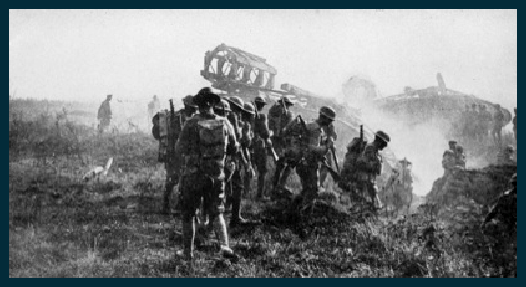
Though relatively small in the grand scheme of things this was the first time that the Hindenburg line had been pierced. This was the beginning of a turning point in the war, it was noted how the Germans had given up their position relatively easily. It highlighted the lack of fighting spirit amongst the German army at this stage in the war particularly when faced with the Grenadier Guards. The rest of October was largely spent behind the lines in intensive training and drill. There is an entry in the War Diary on October 22nd saying “The Battalion marched to the St Python-
It seems likely that it was as a result of this cold and wet that Edwin contracted pneumonia.
The advance continued through the early days of November. By 10th November the Battalion had reached Pont Allont, where they spent the day resting. On the morning of 11th November at 7.00 a.m. a wire was received reading “Hostilities will cease at 11.00 hours today”. On 14th November a Solemn Mass of thanksgiving for the cessation of hostilities was celebrated at the Collegiate Church at Mauberge which all the Roman Catholics in the battalion attended. By this stage Edwin was almost certainly in hospital where he died the following day. He was buried in the St Sever cemetery extension in Rouen.
